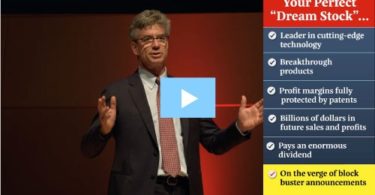Introduction: Major tech companies like Microsoft, OpenAI, and Anthropic are pouring over $100 million into integrating AI tools in classrooms ([1]), highlighting the surge in education technology investment. For equity investors, the reflex might be to chase those big tech names. However, sometimes the opportunity lies in overlooked players. Ampco-Pittsburgh Corporation (NYSE: AP), a 94-year-old industrial manufacturer, may not scream “AI,” but its fundamentals and valuation warrant a closer look. Below, we dive into AP’s dividend policy, financial leverage, coverage ratios, valuation, and the key risks/red flags and questions that investors should consider.
Dividend Policy & Yield
Ampco-Pittsburgh has a long legacy of rewarding shareholders – every year from 1965 through mid-2017 the company paid a cash dividend ([2]). However, in June 2017 management suspended the quarterly dividend to preserve cash amid operational challenges ([2]). Since then, no dividends have been paid, leaving the current dividend yield at 0%. This cut marked a strategic shift: AP redirected cash toward debt reduction and business reinvestment. Given the company’s recent losses, a near-term dividend reinstatement appears unlikely. Investors seeking income should note AP is presently a pure turnaround/value play rather than an income stock.
Leverage and Debt Maturities
AP carries a significant debt burden relative to its modest equity base. Total debt roughly doubled in 2022 as the company financed new equipment and working capital needs. By year-end 2022, long-term debt was about $93 million (up from ~$41M in 2021) plus $12.4M current portion ([2]), a substantial sum for a company with a market cap under $50M. Key financing transactions included a sale-leaseback and equipment financing to fund a major U.S. plant modernization ([2]) ([3]). The primary credit facility (an asset-based revolver) matures on June 29, 2026 ([2]), which means the clock is ticking for AP to either refinance or pay down a chunk of its borrowings in about 1.5 years. As of mid-2024, liquidity was tight: AP had just $7.9M cash on hand and ~$20.5M in unused revolver capacity ([3]). Management has acknowledged the debt load and is taking steps to reduce debt, but in the meantime, interest costs are rising and eating into earnings ([3]). Investors should monitor AP’s debt maturity schedule and plans for refinancing; any difficulty rolling over the 2026 debt (or earlier term loans) could pose a liquidity crunch. On a positive note, the company’s healthy order backlog ($360+ million as of mid-2024) ([3]) ([3]) provides some visibility into future cash flows that could support deleveraging if margins hold up.
Coverage and Financial Strength
AP’s ability to service its debt is a chief concern. Interest expense has surged with higher debt and rising rates – $3.0M in Q2 2024 alone, up ~36% year-over-year ([3]). In that quarter, operating income was $5M, meaning interest consumed more than half of operating profits. This thin interest coverage underscores why the company’s credit agreement requires a minimum fixed-charge coverage ratio of 1.05× if revolver availability falls below a certain threshold ([2]). Essentially, AP must barely break even after debt service to avoid covenant breaches. The company’s recent earnings show improvement: Q2 2024 saw net income of $2M ($0.10/share) amid strong performance in the Air & Liquid Processing segment ([3]) ([3]). However, full-year 2023 was marred by a $40.9M non-cash asbestos-related charge, resulting in a net loss of $34.6M ([4]). Excluding unusual items, core operations are near breakeven to modestly profitable, so coverage of interest is likely below 2× on a normalized basis. AP’s EBITDA margin remains in single digits, and management’s goal is to drive it into double digits through efficiency gains ([5]). Until that happens, fixed obligations (interest, leases, pensions) will continue to pressure the bottom line. On the positive side, the Air & Liquid Processing (ALP) segment has proven resilient with consistent 10–13% operating margins and record earnings in 2022 ([5]). This steady segment (which serves HVAC, naval, and industrial markets) provides a base of cash flow to help cover corporate costs and support the more cyclical Forged/Cast metals segment. Going forward, investors will want to see improving coverage ratios – either via higher operating profits (management cites new equipment boosting efficiency) or via debt reduction – to gain confidence in AP’s financial stability.
Valuation and Comparables
Ampco-Pittsburgh’s stock looks deeply “cheap” by several metrics, though not without reason. Shares trade around 0.1× trailing annual revenue (Price/Sales ~0.11) ([6]) – a fraction of what larger industrial peers command. For example, Kaiser Aluminum (a metals peer) trades at ~0.4× sales ([6]). AP’s price-to-book ratio is also very low: shareholders’ equity was over $100M as of Dec 2022 ([2]), whereas the market cap has hovered in the $30–50M range, implying P/B of ~0.3–0.5. This discount to book value suggests skepticism about the real worth of AP’s assets (notably, the balance sheet includes sizeable asbestos insurance receivables and specialized plant equipment ([2]) ([2])). Traditional earnings multiples are less useful given volatile profits – trailing EPS is negative (AP reported a net loss in 2023), so the P/E appears as “N/A” or negative ([6]). However, looking at normalized potential earnings, the stock is arguably priced for a turnaround that has yet to fully materialize. One approach is to value AP on a sum-of-the-parts basis: the stable ALP segment (with ~$10–12M annual operating income ([5])) could command a healthy multiple (perhaps 6–8× EBIT) if it were a standalone industrial supplier, while the cyclical Forged and Cast Engineered Products segment would merit a lower multiple until margins recover. Even using conservative assumptions, the enterprise value (market cap + debt) to sales is under 0.4× – suggesting the market is factoring in either sustained low profitability or hefty liabilities (or both). It’s worth noting that analyst coverage is sparse: MarketBeat reports only one analyst rating (a Sell) on AP ([6]), compared to multiple analysts with modest Buy/Hold ratings on peers. In short, AP’s valuation is exceptionally low by asset and sales metrics, reflecting its high-risk profile. If management can deliver consistent profits (they’re targeting ~$25M net income on $500M revenue in the future ([5])), the upside could be significant. Until then, the stock may remain a “show me” story trading at distressed multiples.
Risks and Red Flags
Investors should weigh several key risks and red flags before taking a position in Ampco-Pittsburgh:
- 6,700 IRS agents terminated — markets are shaky.
- IRS-approved loophole to shield retirement.
- No penalties. No surprise taxes. No Wall Street exposure.
– High Leverage & Tight Liquidity: AP is operating with substantial debt and thin cash buffers. The company is “quickly burning through cash” and carries significant debt that concerns investors ([4]). Heavy interest costs (floating-rate debt) and required debt amortization could strain liquidity if business cash flow falters. Its credit facility covenants require maintaining availability or coverage, limiting financial flexibility ([2]). Any downturn could risk a covenant breach or the need for dilutive capital raises. – Asbestos Liability Exposure: A legacy issue – AP’s Air & Liquid Systems subsidiaries face ongoing asbestos litigation from historical products. While insurance has covered the majority of settlement costs to date ([2]), the long-tail liability remains. In late 2023, AP dramatically increased its asbestos reserve, taking a $40.9M charge ([4]) that wiped out annual earnings. This indicates either a higher projected claim volume or insufficient insurance coverage. The ultimate payout is uncertain, and management even disclosed a material weakness in internal controls related to asbestos claim tracking ([2]). This issue could continue to consume cash and management attention for years. – Cyclical End Markets: The Forged and Cast Products segment (roughly two-thirds of revenue) is tied to the steel and aluminum industry, which is notoriously cyclical and globally competitive. Economic downturns or excess global steel capacity can sharply reduce demand for AP’s mill rolls ([5]). Indeed, AP has struggled when steel production declines or when import competition is high. Recent European operations have been hurt by high energy costs and lower utilization ([4]), showing the segment’s vulnerability to macro factors. A recession or commodity slump is a major risk to AP’s top line. – Small-Cap and Liquidity Risk: With a market capitalization around $40–$50 million, AP’s stock is thinly traded and can be volatile. It even flirted with NYSE listing compliance issues – the average market cap was just $54.6M at end of 2022 ([2]) (NYSE usually requires >$50M), and the share price has at times approached the $1 minimum threshold. Being delisted to OTC markets due to low price or cap would reduce share liquidity and could pressure the price further ([2]). The small size also limits AP’s access to capital; management noted that as a non-WSKI (well-known seasoned issuer), tapping debt or equity markets on good terms is challenging ([2]). – Execution and Turnaround Risk: AP’s recent improvements (new equipment, cost cuts) must translate into sustained profits. Any operational setbacks – e.g. the unplanned plant outage in Sweden in Q1 2024 ([4]) – can quickly impact earnings given the thin margin of error. There’s also concentration risk: AP depends on a relatively small number of large steelmakers for its roll business, and on project-driven orders (like U.S. Navy contracts) for its ALP business. Losing a major customer or delay in a big order could hurt results.
These risks underscore that AP is far from a low-risk investment. The stock’s deep-value metrics are balanced by substantial uncertainty and financial strain. Investors should monitor these red flags and demand evidence of continued improvement in AP’s fundamentals.
Open Questions & Potential Upside
Despite the challenges, Ampco-Pittsburgh does have pathways to unlock value – but several open questions remain:
Show the 3 steps ▾
- Confirm the Trend — watch the confirmation cross.
- Buy an Option — call for up, put for down.
- Sell & Collect — take your skim and rinse-repeat.
– Can the turnaround deliver? Management’s “Ampco-Pittsburgh Moving Forward” plan aims for double-digit EBITDA margins and ~$25M in net income longer-term ([5]). Achieving this hinges on successful execution of efficiency projects and revenue growth to ~$500M. Will the new forging equipment, plant consolidations, and pricing improvements materially boost margins in coming years? Q2 2024 results were encouraging, but consistency is key. – Will the Air & Liquid segment be a hidden gem? The ALP segment (Aerofin, Buffalo Pumps/Air Handling) has proven itself with stable profits and even record backlog from pharma and Navy contracts ([3]) ([3]). This segment could thrive on trends like infrastructure upgrades, naval shipbuilding, and HVAC replacements. Could AP consider monetizing or spinning off this segment to realize its value? A separation might fetch a valuation higher than what the market currently awards the whole company, but it would also leave the remaining roll business exposed. It’s a strategic question now that ALP is ~30% of sales and growing. – How will the debt be handled? The looming 2026 debt maturity raises the question of whether AP will refinance, repay, or restructure its borrowings. With interest rates up and AP’s credit profile weak, refinancing could be costly. Successful operations could allow gradual paydown, but if not, will management explore an equity raise or asset sale to reduce leverage? The answer will impact shareholder dilution and the company’s risk profile. – Is an activist-driven change on the horizon? In 2023, an activist investor (Ancora) accumulated ~5.7% of shares and secured two board seats for its nominees ([7]) ([7]). This suggests internal pressure for unlocking value. Ancora’s involvement begs the question: could AP pursue more aggressive actions – such as selling non-core assets, merging with a peer, or even selling the company outright – to maximize shareholder value? Thus far, the cooperation agreement implies the activist is giving management time to execute, but this dynamic adds an element of strategic uncertainty (and potential upside if it leads to value-enhancing moves). – When (if ever) might dividends return? Many long-term shareholders remember AP as a steady dividend payer for decades. With the payout now halted for 6+ years, an eventual dividend comeback would signal confidence in stable cash flows. However, it likely won’t happen until debt is tamed and earnings truly recover. For now, this remains an open question for the post-turnaround future.
Conclusion: Ampco-Pittsburgh offers a classic contrarian scenario – an old-line industrial firm with serious baggage (debt, asbestos, cyclical exposure) but also tangible assets, a strong niche franchise in mill rolls, and a quietly profitable industrial products division. The backdrop of Big Tech investing in AI education may grab headlines ([1]), but AP’s story is about grinding out improvements in a traditional business. “Grab your share” in this context means carefully considering whether the steep discount on AP shares prices in too much doom and gloom, or just enough. The stock could reward investors if management’s turnaround plan gains traction and the balance sheet risks are managed down. Yet, it remains a high-risk, high-reward proposition. Potential investors should stay grounded in the facts – monitor those SEC filings and financials – and be prepared for a bumpy class session before AP graduates to a healthier, dividend-paying future.
Limited-Time: Join the Fraternity
Sources
- https://apnews.com/article/f7554b6550fb90519dd8129acac8e291
- https://sec.gov/Archives/edgar/data/6176/000095017023008972/ap-20221231.htm
- https://investing.com/news/stock-market-news/earnings-call-ampcopittsburgh-reports-a-net-income-of-2-million-93CH-3570164
- https://investing.com/news/stock-market-news/earnings-call-ampcopittsburgh-reports-growth-amid-challenges-93CH-3354839
- https://sec.gov/Archives/edgar/data/6176/000095017023044159/ap-ex99_1.htm
- https://defenseworld.net/2025/10/13/critical-survey-kaiser-aluminum-nasdaqkalu-vs-ampco-pittsburgh-nyseap.html
- https://sec.gov/Archives/edgar/data/6176/000095017025047227/ap-20250328.htm
For informational purposes only; not investment advice.




